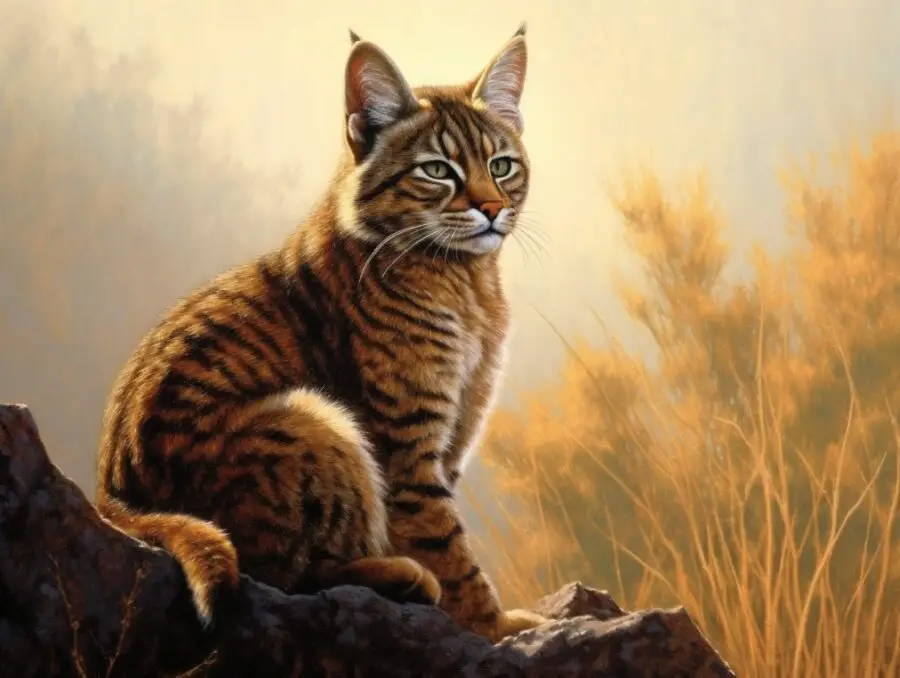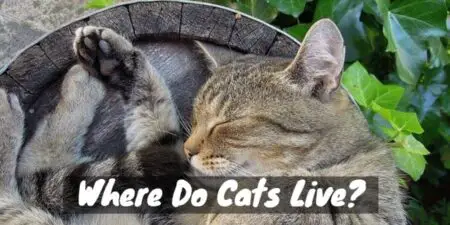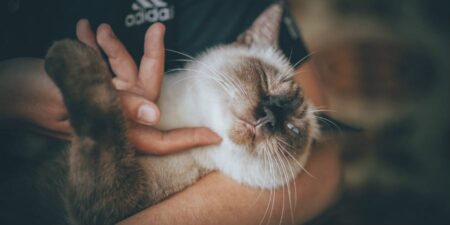Have you ever wondered how your purring pet cat, comfortably curled up on your lap, shares a lineage with the wild and ferocious felines of the animal kingdom?
The journey of cats, from their wild ancestors to the domesticated companions we know today, is a fascinating tale of evolution, adaptation, and human intervention.
The Wild Origins
Cats, or Felidae, belong to a family that includes some of the most formidable predators on the planet, such as lions, tigers, and leopards.
The domestic cat, Felis catus, is believed to have evolved from a wild ancestor known as Felis lybica, the African wildcat, around 9,000 years ago.
The African wildcat is a solitary, nocturnal creature adept at hunting and surviving in harsh environments.
These traits are still evident in our domestic cats: their independent nature, preference for nighttime activity, and remarkable hunting skills.
The Path to Domestication
The domestication of cats is believed to have begun in the Fertile Crescent, a region in the Middle East known as the cradle of civilization.
Humans began storing surplus crops as they transitioned from a nomadic lifestyle to settled farming.
These grain stores attracted rodents, which in turn attracted wildcats.
Over time, a mutually beneficial relationship developed.
The wildcats helped control the rodent population, protecting the grain stores, and in return, they had a consistent food source.
Humans likely tolerated the presence of these wildcats because of their usefulness in pest control.
Unlike dogs, which were actively domesticated by humans, cats are thought to have undergone a process of self-domestication.
This means they gradually adapted to living alongside humans of their own accord, rather than being selectively bred for specific traits.
The Spread of Cats Around the World
Cats were revered in ancient Egypt, often depicted in art, and worshipped as deities.
The Egyptians are believed to have been the first to fully domesticate cats, and they imposed strict laws against taking cats outside the country.
Despite these laws, cats gradually spread to other parts of the world, likely through trade routes.
Here are some key milestones in the spread of cats:
- Around 2000 BCE: Cats appear in ancient Greek and Roman art, indicating their presence in these civilizations.
- Middle Ages: Cats spread throughout Europe, although they faced persecution due to superstitions and associations with witchcraft.
- 17th Century: European settlers bring cats to the Americas aboard their ships for rodent control.
- 19th Century: The concept of cat breeds begins to emerge, with selective breeding for specific traits.
Genetic Studies on Cat Domestication
Recent genetic studies have played a crucial role in understanding the domestication of cats.
Scientists have used DNA from ancient cat remains to trace their migration and evolution.
A landmark study published in 2017 analyzed the DNA of over 200 cat remains found at archaeological sites across the world.
The study revealed that cats were likely domesticated in the Near East and Egypt at separate times.
It also showed that cats traveled with humans along trade routes, gradually spreading across the globe.
This genetic evidence supports the theory of self-domestication and provides fascinating insights into the journey of cats from wild animals to domestic pets.
How We Domesticated Cats (Video)
Behavioral Traits of Domestic Cats
Domestic cats have retained many behavioral traits from their wild ancestors.
For instance, they’re solitary hunters who prefer to stalk and pounce on their prey, a behavior directly inherited from the African wildcat.
Domestic cats also display a strong territorial instinct, marking their territory with scent and often reacting aggressively to intruders.
However, they have also developed behaviors conducive to living with humans.
Many cats enjoy social interactions with their human companions and can form strong bonds with them.
They have also adapted to indoor living, showing a remarkable ability to navigate human homes and routines.
Cats in Culture and Mythology
Cats have held significant roles in various cultures and mythologies beyond ancient Egypt.
In Norse mythology, cats were associated with the goddess Freyja, who had a chariot drawn by large, powerful cats.
In Japanese folklore, the “Maneki-Neko” or “beckoning cat” is a common talisman believed to bring good luck to its owner.
Conversely, in Medieval Europe, cats were often associated with witchcraft and superstition, leading to widespread persecution.
These cultural beliefs and representations reflect the complex relationship between humans and cats throughout history.
Health and Lifespan of Domestic Cats
Domestication has had a significant impact on the health and lifespan of cats. Domestic cats typically live longer than their wild counterparts due to regular meals, fewer threats, and access to veterinary care.
However, they’re also prone to a range of health issues, including obesity, dental disease, and certain genetic disorders.
Some of these health problems are linked to the lifestyle and diet of domestic cats, which differ significantly from those of their wild ancestors.
Comparison with Other Domesticated Animals
The domestication process of cats is unique compared to other animals.
While dogs were actively domesticated by humans for specific roles such as hunting, herding, or companionship, cats underwent a process of self-domestication.
They gradually adapted to living alongside humans of their own accord, attracted by the abundance of rodents in human settlements.
This difference is reflected in the behaviors of domestic cats and dogs.
Cats have retained more of their wild instincts and display a higher degree of independence compared to dogs.
Impact of Domestic Cats on Wildlife
Domestic cats can have a significant impact on local wildlife, particularly in areas where they have been introduced.
Their hunting instincts, honed over thousands of years, make them efficient predators.
In regions like Australia and New Zealand, domestic and feral cats have contributed to the decline of native species, particularly birds and small mammals.
This has led to calls for responsible pet ownership, including keeping cats indoors or providing them with enclosed outdoor spaces.
The Modern House Cat
Today, there are dozens of different cat breeds, each with its own unique appearance and temperament.
Despite these differences, all domestic cats share a common ancestry with the African wildcat.
Modern cats still retain many of their wild instincts.
They’re solitary hunters who can be fiercely independent, yet they have also adapted to live in close contact with humans.
They can form strong bonds with their human companions, and many cats display a level of sociability that would have been unthinkable in their wild ancestors.
Conclusion
The journey of cats from wild animals to domestic pets is a testament to their remarkable adaptability.
It’s a story that spans thousands of years and countless generations, from the wilds of Africa to the comfort of our living rooms.
So, the next time your cat curls up on your lap, remember that you’re not just petting a domestic animal – you’re touching a piece of ancient history.
"In ancient times cats were worshipped as gods; they have not forgotten this."
-- Terry Pratchett





